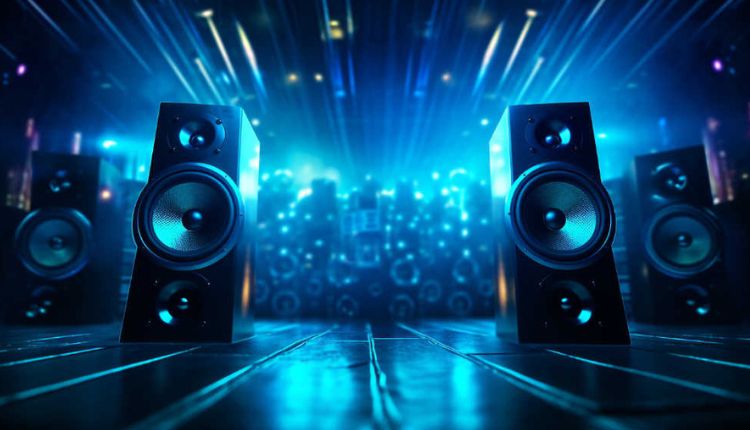Whether you’re watching a sound speaker movie, listening to your favorite playlist, or attending a live concert, sound audio systems play an important function in handing over the audio experience. These devices convert electrical indicators into audible sound waves, supplying readability, depth, and dynamic variety to enhance listening. As generations advance, the alternatives and talents of speakers have elevated extensively, allowing users to locate the proper sound answer for each environment and cause.
Types of Sound Speakers
There are numerous varieties of sound speaker audio systems, each designed to serve a specific function or environment. Bookshelf audio systems are compact and suitable for small rooms, supplying a satisfactory balance between length and sound. Floor-standing speakers, frequently used in domestic theaters, provide effective audio output and deeper bass due to their large enclosures and more than one driver.
Satellite speakers are small gadgets used in surround sound setups, usually mixed with a subwoofer. Sound speaker are glossy, horizontal gadgets located underneath TVs, perfect for enhancing TV audio without requiring multiple additives. Portable Bluetooth audio systems are designed for mobility, offering rechargeable batteries and wireless connectivity for on-the-move use. Each kind has its blessings and is chosen primarily based on the person’s needs and space.
Components of a Sound Speaker
A loudspeaker includes several key additives that work collectively to provide sound speaker. The most critical part is the motive force, which includes woofers, tweeters, and occasionally mid-variety drivers. Woofers deal with low-frequency sounds (bass), tweeters produce high-frequency sounds (treble), and mid-variety drivers manipulate sounds among these extremes.
The sound speaker enclosure, or cupboard, influences sound quality by way of controlling resonance and airflow. Crossovers are digital circuits that divide the audio signal into exclusive frequency bands and send them to the appropriate drivers. Together, those additives form the sound output and define the overall audio performance of the speaker.
Understanding Frequency Response and Sound Speaker
Frequency reaction and sensitivity are important specifications to keep in mind when comparing a valid sound speaker performance. Frequency reaction refers back to the range of sound frequencies a speaker can reproduce, commonly measured in hertz (Hz). A wider frequency range shows that the speaker can handle each deep bass and excessive treble sound efficaciously.
Sensitivity, measured in decibels (dB), displays how loud a speaker can get with a given quantity of strength. In the higher sensitivity method, the speaker calls for less electricity to achieve excessive extent ranges. Understanding those metrics enables users to pick out a sound speaker that suits their preferred sound profile and energy necessities.
Sound Speaker Connectivity Options
Modern sound speakers come with quite a few connectivity alternatives to fit distinct usage scenarios. Traditional stressed audio systems use speaker cables and require an amplifier or receiver for operation. Wireless options encompass Bluetooth and Wi-Fi speakers, which allow customers to move audio from smartphones, tablets, or computers without cables.
Some superior sound speaker support multi-room audio, allowing customers to play synchronized tunes across distinct rooms through apps. Smart audio systems integrate voice assistants like Alexa, Google Assistant, or Siri, allowing voice-managed playback and smart domestic integration. The preference of connectivity influences convenience, compatibility, and audio excellence.
Impedance and Power Handling Explained Sound Speaker
Impedance and energy management are essential elements in matching audio system with audio system. Impedance, measured in ohms, represents the speaker’s resistance to electric current. Most speakers have an impedance of four, six, or eight ohms.
It’s essential to pair speakers with amplifiers that can handle their impedance stage to avoid distortion or harm. Power management, measured in watts, suggests how much power a speaker can cope with continuously and at top degrees. Matching a speaker’s energy rating with the output of an amplifier ensures the most appropriate overall performance and protects both gadgets from potential harm.
The Role of Subwoofers in Sound Speaker
Subwoofers are specialized sound speaker systems designed to breed low-frequency sounds, usually from 20 Hz to 200 Hz. These deep bass tones add richness and impact to music, films, and gaming audio. Subwoofers are often utilized in home theater systems to enhance motion scenes, explosions, and musical intensity.
They may be both powered (energetic) with integrated amplifiers or passive, requiring an external amplifier. The placement of a subwoofer in a room influences its overall performance, and finding the right area can extensively enhance bass response. Adding a subwoofer to a speaker setup guarantees a fuller and more immersive sound experience.
How Sound Speaker Placement Affects Sound Quality
The placement of the sound speaker audio system plays a sizable role in overall audio performance. Poor placement can result in imbalanced sound, muffled audio, or weak bass. Ideally, the audio system must be positioned at ear level and angled closer to the listener to create a clear stereo image.
The bookshelf and floor-standing audio systems benefit from being positioned some feet away from walls to prevent bass distortion. Surround sound setups require cautious arrangement, with the front, center, and rear audio systems placed to create an enveloping sound discipline. Experimenting with speaker placement can help fine-tune the listening experience and optimize overall acoustic performance.
Selecting the Right Sound Speaker for Your Needs
Choosing the right speaker includes considering the supposed use, room size, favored audio excellence, and budget. For casual listening in small spaces, a compact bookshelf or Bluetooth audio system might also suffice. Audiophiles and home theater fanatics might also decide upon high-cease ground-status sound speaker or a complete surround sound device.
The Bottom Line
Gamers and content material creators frequently search for speakers with specific imaging and audio latency. Evaluating speaker specifications, reading opinions, and trying out merchandise in person can help in making an informed decision. Investing in first-rate speakers ensures long-term pleasure and a better auditory revel. The sound speaker market functions with quite a number of official brands acknowledged for their innovation and audio excellence. Brands like Bose, JBL, Sonos, Klipsch, Sony, and Bowers.
